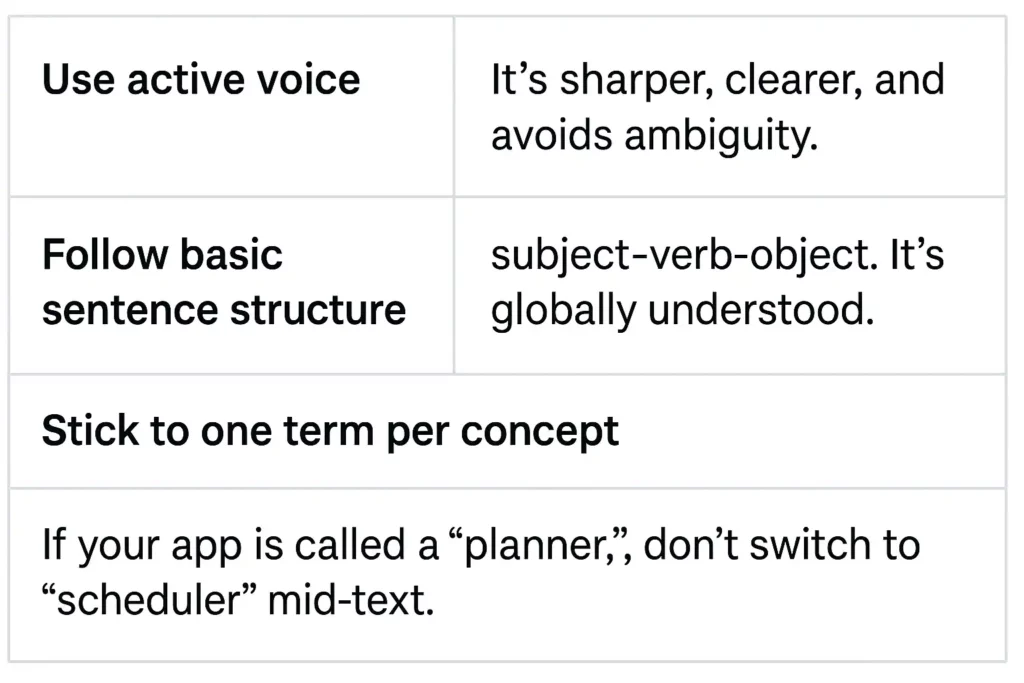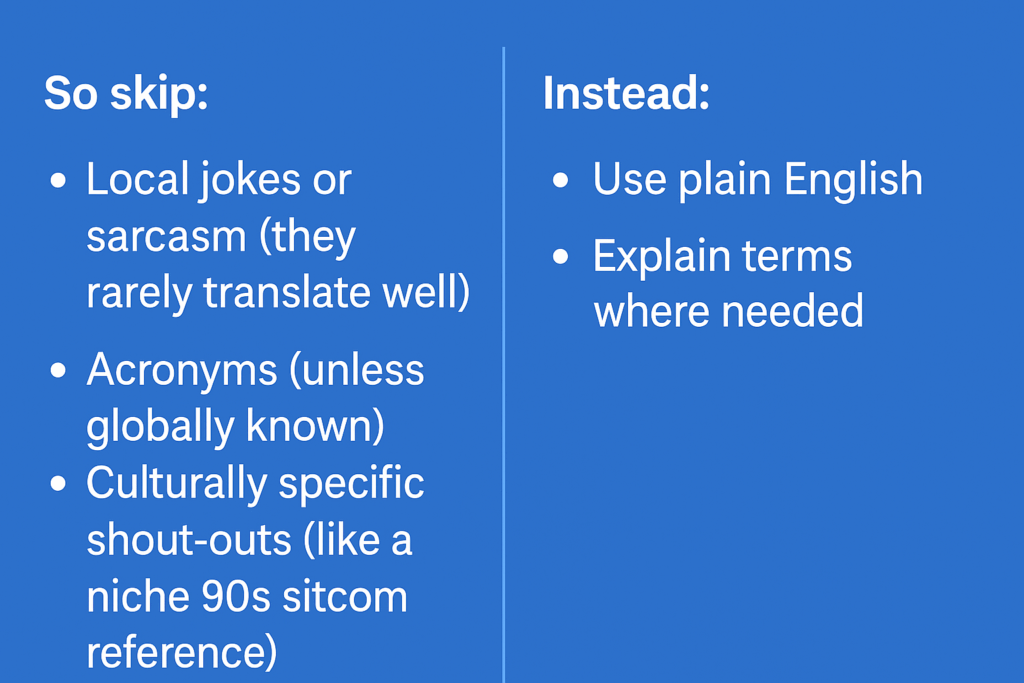Translate your content effectively to reach a global audience. Avoid these writing mistakes that slow down translation, raise costs, and delay your market launch. Use these tips to write clearly and go global faster.
1. Make Clarity Your Core Language
Clarity ensures that when you translate content, readers everywhere receive the same message, tone, and call to action—without confusion or added interpretation. Clear writing reduces the risk of missteps and helps your ideas travel intact across borders.

“Clear writing makes clear translation possible.” — Every great translator, ever.
When translators see clean, direct, consistent writing, they can focus on the message, not the guesswork.
Clarity ensures that readers around the world experience the same message, tone, and call to action without confusion. In a digital economy where miscommunication can cost millions, clarity isn’t just a nice-to-have; it’s a business essential.
Simplicity makes content relatable across languages and cultures. It also makes it easier to translate content without losing nuance, since straightforward expressions leave less room for error or misinterpretation.Not everything clever is cross-cultural. Slang, idioms, and cultural references often land flat—or worse, confuse readers abroad.

🙂A good rule of thumb? If your grandmother wouldn’t get it, your international reader might not either.

According to a CSA Research study, 76% of international audiences prefer content in their native language even when they speak English. Simplicity makes the content relatable across different languages and cultures.
3. Use Tools Translators Love
Concise sentences not only aid understanding,but they also make it easier to translate content smoothly into multiple markets. Shorter structures reduce the risk of grammatical confusion and help your brand message stay sharp worldwide.Want to make your translator fall in love with your copy? Make it consistent.
| Principle | What It Does | Example of Good Practice | Example of Bad Practice |
|---|---|---|---|
| Stick to a glossary | Keeps terminology consistent | Always call it a “planner” | Sometimes “planner,” sometimes “calendar” |
| Use a style guide | Ensures same tone and format | American English, friendly tone | Random mix of formal/casual styles |
| Limit synonyms | Reduces user confusion | Always “dashboard” | “Dashboard” + “control panel” + “console” |
Smartling reports that clients who provide glossaries and guides reduce back-and-forth translation edits by up to 35%.
Maintaining terminology consistency isn’t just helpful for translators; it protects your brand voice internationally. It ensures that “customer service,” “client support,” and “user help” don’t accidentally diverge into different meanings in different languages.
READ MORE: Before & After: Rebranding with Multilingual Content
TAUS – Terminology Management
4. Keep Sentences Short
Brevity isn’t just the soul of wit—it’s the soul of translation clarity.
Long sentences = higher chance of:
- Grammatical confusion
- Mismatched clauses
- Translation errors
Tips for staying brief:
- Keep sentences under 20 words whenever possible.
- Break up complex ideas into bullet points or shorter paragraphs.
- Avoid multiple clauses connected by commas and conjunctions.
A study by Common Sense Advisory found that sentences exceeding 20 words are 27% more likely to be mistranslated. Simple, concise sentences not only facilitate better understanding but also help maintain your intended tone across different languages.
5. Translate with SEO in Mind
Translation isn’t just about meaning—it’s also about search visibility.
- Research your target market’s search behavior.
- Identify keywords in local languages.
- Collaborate with native-speaking marketers or SEO experts.
Example: A US company might say “online learning,” but in Germany, users search for “E-Learning-Plattform.”
Optimizing translated content for SEO ensures it gets found organically in different markets. According to SEMrush, localized SEO efforts can increase organic traffic by up to 47%.
Remember, direct translation of keywords often doesn’t capture how people actually search in their native language. Localization of keywords can make or break your global digital strategy.
READ MORE: Chinese Translation and Localization Playbook on Business Growth
6. Be Mindful of Cultural Sensitivities
Inclusive, globally friendly writing makes it easier to translate content for audiences with diverse cultural backgrounds. By avoiding references that don’t travel well, you ensure your message remains respectful and universally welcoming. Writing for translation means being aware that humor, idioms, politics, or historical references might not resonate universally—and might even offend.

Avoid:
- Humor that relies on wordplay
- References to local pop culture
- Expressions that assume shared knowledge or norms
Instead, craft universally positive and inclusive messages that welcome all audiences.
Content should celebrate global diversity rather than accidentally excluding or alienating a group. As the world becomes more interconnected, cultural empathy in your content strategy isn’t optional; it’s foundational.
When you write clearly and consistently, you empower translators to deliver your vision with accuracy. When you simplify without dumbing down, you invite the world into your story.
The bottom line?
Write to connect—and the world will hear you loud and clear.
Ready to make your content global-ready?
Let’s build a clear, consistent, and professional voice together.
👉 Contact us today to get started on your next translation or localization project.
